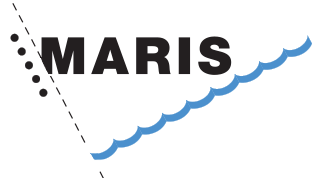The IDDAS (Interdisciplinary Data Discovery and Access Service) and the Semantic Analyser are essential for enhancing the finding and utilisation of environmental data as part of the FAIR-EASE project, which promotes FAIR (Findable, Accessible, Interoperable, Reusable) data. By utilizing Semantic Web concepts, these technologies contribute to promote multidisciplinarity, interoperability and standardized data.
IDDAS: a semantic web technology-based service to ease data discovery and access
The goal of IDDAS is to ease the access to environmental data infrastructures and showcase in a practical manner, how the use of new semantic developments can solve some cross-disciplinary challenges. IDDAS improves data discovery and interoperability by employing a standardized metadata model, a custom-made FAIR-EASE DCAT (DCAT-FE), which is created using RDF (Resource Description Framework) vocabularies. This RDF-based method provides optimum structuring for the Semantic Web, which makes metadata available to both academics and computers, in contrast to classical relational databases for example, Structured Query Language (SQL).
IDDAS allows users to search for pertinent datasets using a variety of parameters, including titles, time periods, or keywords. To achieve cross-disciplinary interoperability, the IDDAS includes information from various environmental data infrastructures that were identified by the FAIR-EASE pilots to be relevant to their work.
By enabling researchers to swiftly find collections that are suited to their requirements, IDDAS enhances data discovery. It creates a single access system by integrating disparate data platforms, improving interoperability. Furthermore, it ensures consistent and trustworthy data across datasets by standardizing metadata through the use of a common DCAT profile.
Semantic Analyser: A Tool for Metadata Analysis and Harmonisation
The Semantic Analyser complements IDDAS by focusing on improving and harmonizing metadata directly at the source. The Semantic Analyser is specifically designed to analyze metadata from former formats and standards, such as ISO 19115-1:2014 for describing geographic data. This standard provides detailed information on key aspects, including the identification of data, its spatial and temporal scope, quality, and distribution properties.
The tool identifies essential components within metadata—such as platforms, instruments, variables, or thematic keywords—that are often inconsistently referenced. Addressing these discrepancies supports best practices alignments and permits to fill gaps, that in turn eases the integration of data from many domains, and increases the machine-readability of data.
The extraction of unmatched terms helps identifying opportunities for developing shared vocabularies, strengthening interoperability across disciplines, and enhancing the usability of data for research purposes.v
Try the Semantic Analyser
A Complementary Ecosystem for FAIR Data
Together, IDDAS and the Semantic Analyser embody the vision of FAIR-EASE to provide tools based on robust standards and semantic principles to improve the accessibility and usability of scientific data.
IDDAS simplifies data discovery and access, enabling interdisciplinary analysis. Meanwhile, the Semantic Analyser ensures that these datasets are accompanied by consistent and standardized metadata, optimising their potential use.
Through these tools, FAIR-EASE continues to deliver innovative solutions that support environmental research and foster interdisciplinary collaboration.















